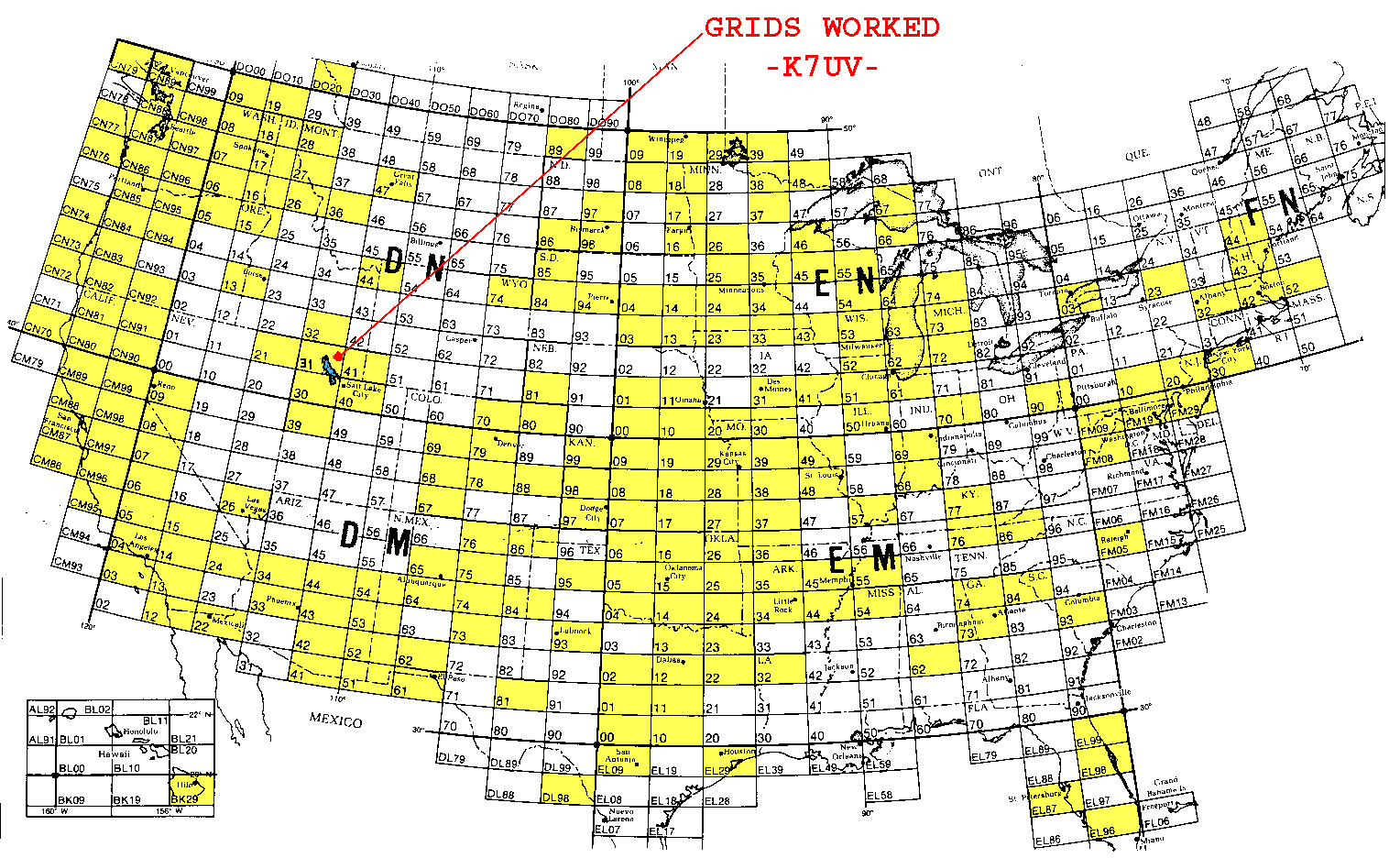My Radio History
I first held my novice
license but I just wanted to talk. So, I upgraded to technician class and got
on six meters in the spring of 1962. I fell in love with six meters as a kid.
I had my novice
license and then my technician license. I never used my first novice call
(KN9FMR) but as soon as I achieved my technician class license (K9FMR) The two
bands easiest to use as a technician in the Midwest were six and two meters. The
popular mode in the early 1960's was AM (amplitude
modulation), and 2 meter FM had not become a popular mode. Most activity above
2 meters was experimental. There was some activity on 70cm, but not too
much in the Midwest. I did have one acquaintance, W9AAG (SK), Dallas, who
worked meteor scatter on both 2 meters and 432 MHz. (Back in the day, the term
"432" was used instead of 70 CM wave length.)
My station was
modest. I had an Hammarlund HQ-110 receiver and a Hallicrafters HT-40
grid-modulated transmitter pumping out around 40 watt into a six and two
meter, single feed line beam. Eventually I converted an old, war surplus
SCR-522 transmitter for two meter AM. After making only local (0-50 miles)
contact on six meters, one morning I heard stations loud from the east coast.
What an introduction to Es (sporadic E) communications! All the locals told me
about Es and kept telling me "just wait!" What a thrill that was. The pattern
for Es openings from my Midwest location was for the band to open to the east
coast, then work itself down to the mid Atlantic states and into Florida and
Georgia. 25% of the time the band would shift to the west in Colorado and the
Dakotas. If the band was particularly strong, I would hear station into Utah,
California and the Pacific Northwest. Fortunately, when I was introduced to
VHF, the sun spot cycle had peaked in 1958-1959 which was one of the strongest
cycles on record, and I was able to be part of that cycle before it began to
minimize.
Our family moved to Utah in late 1978 and the six
meter propagation is entirely different from that of the Midwest. I have never
heard Europe from my location, but I have worked many Alaska, Hawaii and Japan stations
via F2-layer propagation. This was all prior to the introduction of weak
signal digital modes. I currently have no six meter or two meter antennas
because they were removed to replace a hail damaged roof, but hopefully they
can be replaced soon, before the current sunspot cycle peaks in 2024-2025. I
can hardly wait!
This map shows the United
States grids I've worked on six meters from my Utah location in Grid DN31xm.
The map shows the period I worked on VHF from 1985-2000. Other priorities
kept me from serious six meter DX after the year 2000. This map does NOT
show the many Japanese stations I worked using F layer propagation, nor does
it show any FT8/FT4 six meter contacts. Since my 3 element Yagi had to be removed
when my roof was replaced after a severe hail storm in 2018, I now use my
HF trap vertical antenna loaded for six meters...definitely a "compromised"
but functional antenna for VHF digital modes.
